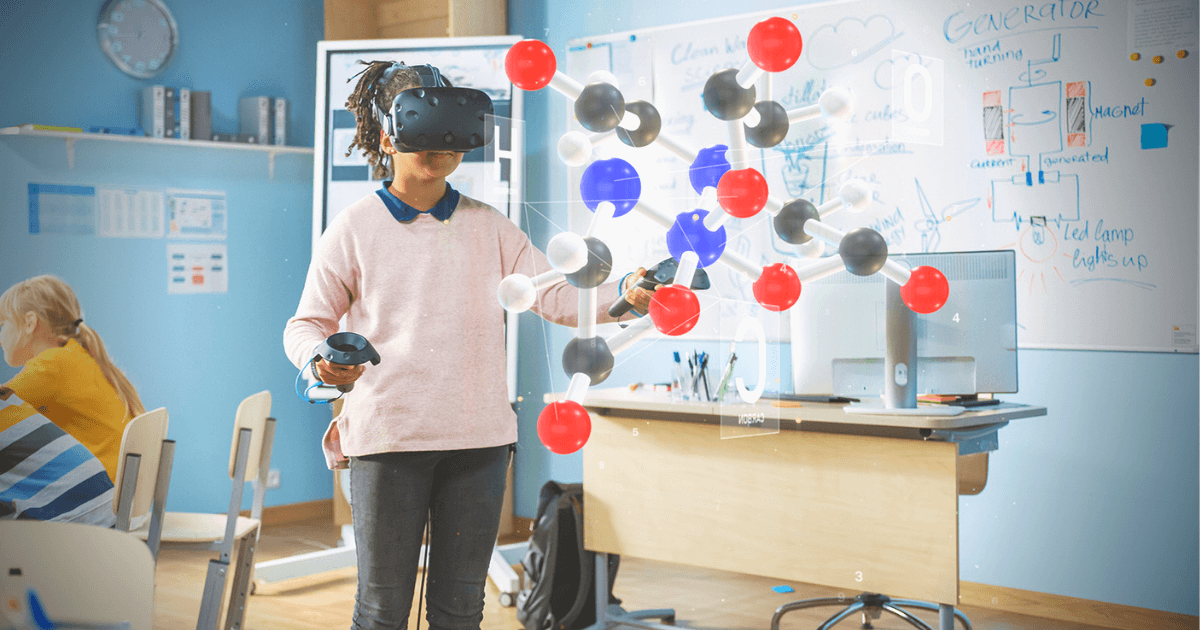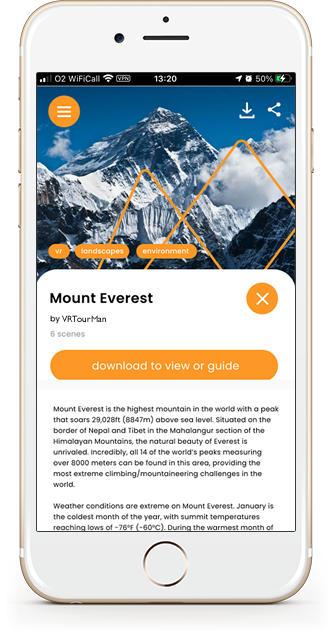
Courtesy of Eduporium
https://www.eduporium.com/blog/eduporium-weekly-ar-and-vr-in-education/
Now, it’s important to note that these tools are not inclusively to entertain users! We can harness the power of these technologies to create dynamic learning environments. Research findings indicate that “VR or AR…must be seen as valid additions to the toolkit that may be used by libraries to engage its audience” and “such tools encourage higher levels of information literacy” (Massis, 2015, p. 796 & 798).
That’s all well and fabulous, but how do librarians begin to incorporate AR and VR? Frankly, it’s a pretty big range based on factors such as specific community needs and price (this tech can get awfully expensive when considering headsets, etc.). Because of what appears to be some ebb and flow in the world of AR and VR, I suggest taking it slow. For example, Google initially invested in VR with Expeditions that allowed teachers to transport students to different places around the world, but they pulled the plug because they didn’t see the payoff potential (Maxwell, 2020). However, many educators were very upset Google ditched the Expedition VR apps! Teachers and librarians saw the value of VR as a way to deepen students understanding of material.
Well, yes, as a matter of fact, there is. A. Verweij (2021) reports ExpeditionsPro could be one of the best replacements. After doing some exploring of my own, I have to agree. ExpeditionsPro is a UK based company that offers free app services as well as a paid version with added offerings. For example, the paid version offers special content such as MEL Science (also lauded by Snelling (2022) in her top resources for bringing AR and VR into the classroom). This resource allows students to immerse themselves in science, such as getting up-close-and-personal with bonding molecules.
For those who had content from Google’s original Expeditions and would like to transfer it over to the ExpeditionsPro platform, no problem! All the old content can be saved into the new. Just as the first app was built with educators in mind, ExpeditionsPro is tailored specifically for educators. Verweij (2021) explains “users can create, upload, edit and share content within the ExpeditionPro’s global community to provide a wide selection of content that is continuously evolving.” Also, the app houses a library has pre-made lesson plans, discussion starters, and assessment tools via the Q&A. “You can record students’ scores within the platform without additional steps to assigning lessons or recording grades” (Verweij, 2021). Lastly, if you are worried about transferability, ExpeditionsPro has got it covered. Their software is based on Unity, which means it can be used on various devices (phones, headsets, etc.). No extra equipment to be purchased, so you can save some much needed funds!
View the Video by Richard Byrne to learn more and see how ExpeditionsPro works.
The next step will be to get the teachers to use the tech. The students will probably be intrigued and what to learn with VR, but the staff might require some persuasion. According to Young (2020), “Limited staff knowledge of the VR system is not only a barrier in building content but a risk to a program’s sustainability.” So, if you plan on incorporating any kind of VR or AR into your program (including ExpeditionsPro), promote, promote, and promote it some more. Get those student’s involved, too.
By including VR tools like ExpeditionPro into your library, you could potentially provide a more enriched learning experience for students by expanding their minds into the world outside of the classroom. I think this tool really helps level the playing field so to speak for students who lack background knowledge about certain places in the world.
I hope you found this content useful!
Until next time...😀


Hi Raegan,
ReplyDeleteI am glad I read your post to better understand ExpeditionsPro! I downloaded the app and explored some of the tours using my Dream Vision Pro Virtual Reality headset (that I bought about 5 years ago and never opened🤣) and my iPhone. As you tour each site, there are targets for you to click on. Each one gives you information. I figured out that I really did not need to use the headset, but it definitely enhanced the experience. I could also explore and listen to the information on my computer. This was a really great experience.
Thank you,
- Wendy -
You mentioned a lot of really good points throughout your blog. I really like that you defined the difference between augmented and virtual reality- that was something new for me! I also agree with you that free programs are normally the best route to try first, because many schools don't have the extra funds and often require a grant for resources like these.
ReplyDeleteHi Raegan,
ReplyDeleteI love this example of AR in the classroom and library. I really cannot believe it is free. We tried to use Google Expeditions in our library before it went away, and our big issue was getting the students and teachers on the same secure network that would not violate their privacy. Other than that issue, it looks like a rich resource for leading immersive tours.
I also agree with you that unless you have multiple teachers that are ready to dive in to AR/VR with you in the media center, it is best not to make huge financial investments. I love that you found a amazing free resource for them.
Best,
Jennifer
Hi Raegan-
ReplyDeleteThank you for sharing. I appreciate the research you've done. It's great that there are some other options out there to Google Expeditions. I think it would be great for our students as they are learning about different things in social studies and science to be "transported" to these places. I definitely like that you can try this on a small scale to see how it fits with your school and learners before making a big investment. Thanks again for sharing.